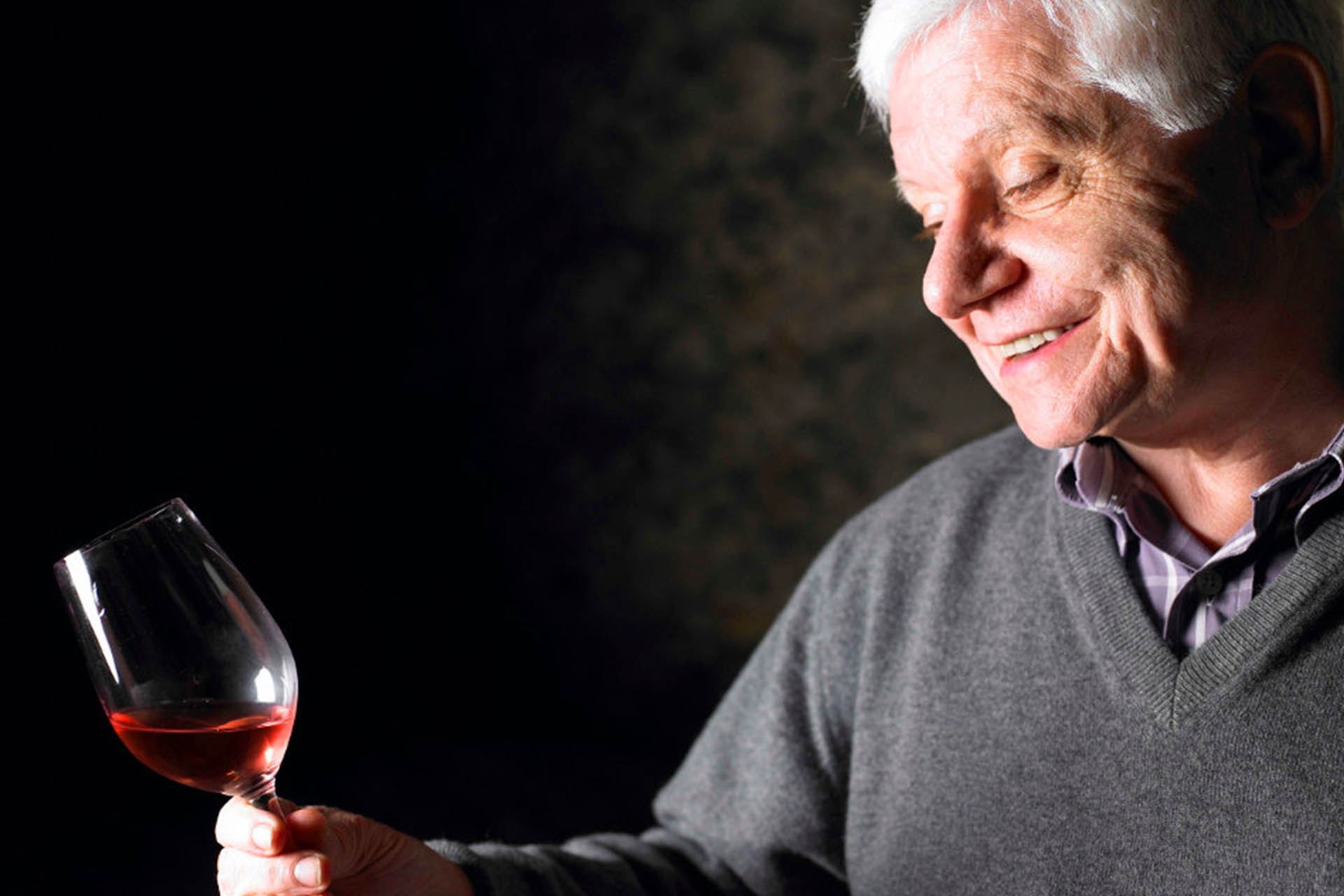Set on the same rocky plateau as Saint-Emilion and Pomerol, overlooking the magnificent Dordogne valley, the area was formerly nicknamed ‘Miracle Hills’ on account of the superb wines produced here. The vineyard of Château le Puy is the second-highest point in the Gironde department. The bulk of the current Château was built in 1832 by our ancestor Barthélemy Amoreau, but the oldest sections date from the early seventeenth century.
A scattering of brick and mud-walled ruins overlook the last traces of a Gallo-Roman settlement, while these hills were also the site of a prehistoric stone tool-cutting centre: flints are still occasionally unearthed today. Building for the twenty-first century and beyond, a new programme of renovation works is underway, reconciling history and modernity to preserve and promote the traditions which have been passed down from generation to generation.
At Château le Puy we practice ‘organic’ and ‘biodynamic’ viticulture, a modern way of saying that we tend the vines just as our grandfathers did: no chemical fertilisers, no herbicides and no artificial insecticides. During the harvests we take particular care to ensure that the grapes are not crushed before they reach the winery. There is thus practically no oxidation of the must before fermentation begins. We also avoid adding any extra yeasts or sugars.
After fermentation the wines are transferred to oak casks and barrels for maturing. This stage can take up to two years, during which time the wine is frequently pumped over, with fining where necessary. We taste every barrel once a week to keep track of the wine’s development.
When the time comes to bottle the wines, we ensure that the process takes place in the middle of the lunar cycle and without any filtration. The bottles are corked and protected by a wax seal.
Château Le Puy wines :
• Barthélemy
The fruit of a plot of vines known as ‘Les Rocs’, planted with 85% Merlot and 15% Cabernet Sauvignon, the Barthélemy undergoes a long vinification process with no added substances. The wines are matured in oak barrels for 24 months, with our technical interventions optimised with reference to the lunar calendar and with no added sulphur dioxide or other chemical products. They are then bottled without filtration.
The robe is a deep, enticing purple, while the nose boasts a rich array of aromas which seem to evoke a basket of perfectly ripe grapes. The palate is luxurious and complex, balancing great depth of flavour with a silky lightness of touch. The finish is seductive with a hint of mystery, inviting you to plunge further into this entrancing enigma.
Barthélémy is an ideal partner for all grilled meats, game, mushrooms and refined, delicate ingredients, complementing without overwhelming complex flavours.
Above all, Barthélemy is an emotional experience.
• Émilien
The fruit of a plot of vines planted with 85% Merlot, 7% cabernet franc, 6% cabernet sauvignon, 1% malbec and 1% carménère,, Emilien is matured in oak barrels and casks for 24 months.
The robe is garnet red, with hints of ruby in the younger wines and a touch of orange in the older vintages, with a diaphanous onion-skin finesse to the oldest bottles. The nose is fruity, with ripe red fruit aromas dominated by blackcurrant and redcurrant, accented with roasted almond notes and occasional hints of mushrooms and undergrowth. The palate is well-rounded, full-bodied and precise, with velvety tannins paving the way for a finish is long and enjoyably complex. A wine of great finesse, with smooth tannins in its youth but also the potential to age and grow for several decades, revealing the full depth and character of this prestigious terroir.
A wine blessed with superb longevity, which will serve as a perfect partner for traditional rustic dishes and delicate, complex cuisine alike. A small miracle of elegance and refinement.
• Marie-Cécile
A 100 % Semillon white, vinified and matured with reference to the lunar calendar in traditional oak barrels. A fine example of a natural dry white, with no added sulphites.
Marie-Cécile is enviably endowed: a sparkling golden robe, a fruity nose with notes of pears and exotic flowers, and a full-bodied palate. The attack us supple, the structure precise and the finish long with a touch of minerality. Best consumed within two hours of opening the bottle, or else the wine will react with the air and lose some of its elegance.
Marie-Cécile is a wine to be enjoyed young, an ideal partner for seafood, cheeses with parsley rinds, sheep’s tommes and other strong, complex cheeses.
A pure, delicate indulgence.
• Rose-Marie
This wine is obtained by running off juice from one of the vats of Merlot during the fermentation process, a practice known as ‘la saignée’.
The juice is then fermented in barrels for six to ten months, with no added substances. The rosé is then bottled without filtering and without sulphites, leaving us with a perfectly natural wine.
The robe can vary greatly from one year to the next, from sparkling ruby to crisp, clear rose. The nose is fresh and floral, with red fruit aromas alongside notes of peonies and white flowers. On the palate Rose-Marie is light and playful, with tannins so light they are barely detectable.
A wonderful clairet, or Bordeaux rosé.





